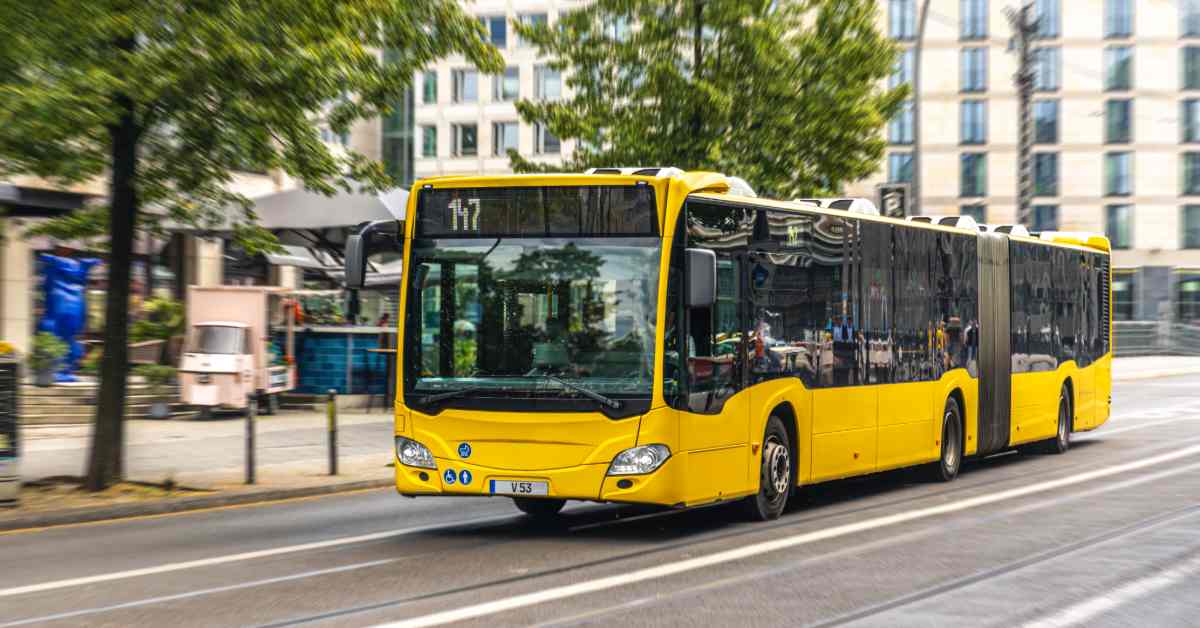As public bus routes disappear in Denmark’s rural towns, young people are finding creative ways to get around. From long commutes to modified tuk-tuks, their daily travels reveal a bigger story about the country’s growing divide between city and countryside.
Long Distances and Early Mornings
For many students in Denmark’s smaller towns, the school day starts long before class begins. In remote areas like Nees and Lemvig in western Jutland, limited bus routes mean that even a short trip to school can take hours. One student had to leave home before 7 a.m. to make it to an 8 o’clock class, with the same early start even if lessons began later.
Because of these long travel times, she eventually moved into a student residence near her high school in Herning. These homes, called “skolehjem,” allow students to stay closer to school when the daily journey becomes too time-consuming. Life there can feel isolating, but being able to walk to class in five minutes instead of spending hours on the road is a major relief.
Emptying Towns and Fewer Buses
As families move from rural areas to larger cities, bus routes are shut down and routes become longer. This has made everyday life significantly harder for residents in smaller communities. Over one-third of Denmark’s municipalities are losing population, leaving many towns emptier each year.
Statistics from Danmarks Statistik show that in Lemvig Municipality, more than half of all residents live farther than 500 meters from the nearest bus or train stop. In big cities like Frederiksberg, by contrast, 95 percent of residents have access to at least ten departures every hour within the same distance.
This uneven access has created frustration and has caught the attention of business groups and policymakers as the local elections approach. Fewer transport connections mean fewer job opportunities and difficulties attracting families to settle outside the larger cities. Without efficient public transport, even local businesses struggle to find workers.
Industry Calls for Long-Term Transport Planning
Denmark’s leading business organization, Dansk Industri, has warned that unreliable bus services hurt not only young people but also future development in rural municipalities. When public transport disappears, so do the chances for young people to work, study, or socialize locally.
The group has suggested long-term funding and collaboration across municipal lines to prevent rural isolation. The aim is to ensure that transport companies can plan ahead instead of depending on uncertain annual budgets.
Creative Solutions: The Rise of the Tuk-Tuk Scooter
When public transport is no longer an option, young Danes have started to come up with their own alternatives. In the small North Jutland town of Tylstrup, a group of teenagers has turned to three-wheeled cabin scooters resembling tuk-tuks—the type commonly seen in Asian cities.
These small vehicles, legally similar to mopeds, have become a hit among rural teens. They offer shelter from the cold, can be customized with lights and music, and allow them to travel freely between homes, schools, and part-time jobs. While a regular scooter ride in November can be freezing, a cabin scooter provides warmth and comfort for the trip.
As these young drivers cruise along narrow country roads, their red and silver vehicles have become a symbol of rural independence—and, in some ways, quiet frustration with disappearing public services.
Freedom Comes at a Cost
For teenagers like those in Tylstrup, the cost of a cabin scooter is often covered by confirmation gifts. Families see it as an investment in mobility and safety. However, the trend also highlights how essential public transportation used to be and how uneven access has become between city and countryside.
For those living far from any bus stop—sometimes up to a kilometer away—having personal transport is not just convenient but necessary. With few regional improvements on the horizon, and with the next election results still uncertain, many fear the regional gap could widen even further.
Looking Ahead
Denmark’s urban migration pattern shows no sign of slowing. For small towns, the challenge is not only losing residents but also maintaining essential services for those who remain. Meanwhile, younger generations are adapting through creativity and resilience.
Whether by tuk-tuk, train, or bicycle, rural students continue to find their way forward. Their choices reveal both the limits of current transport policy and the spirit that still keeps Denmark’s smallest communities moving.
Sources and References
TV 2: Her kører de unge på “gejlede” kabinescootere, fordi de ikke gider vente på bussen
TV 2: Kommunalvalg
TV 2: Valgresultater







